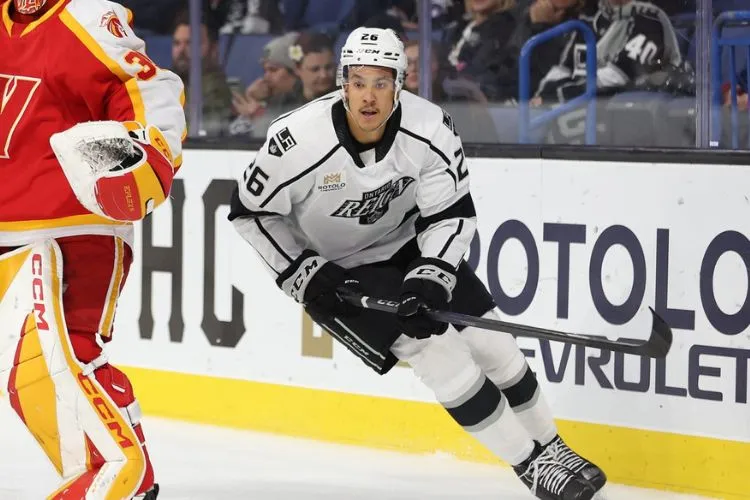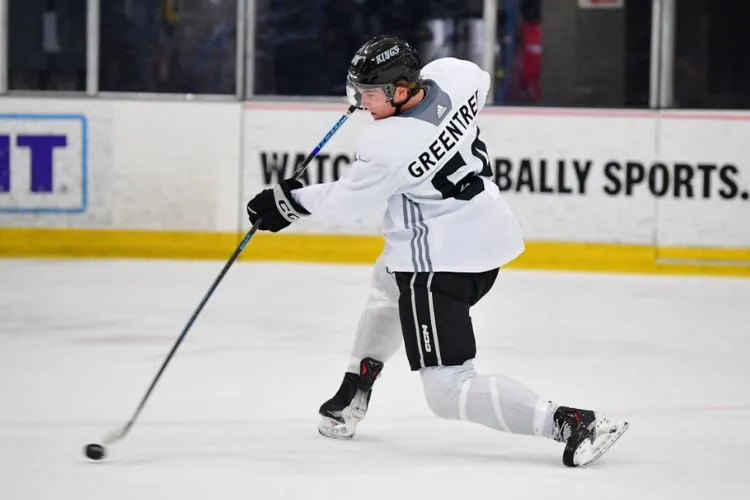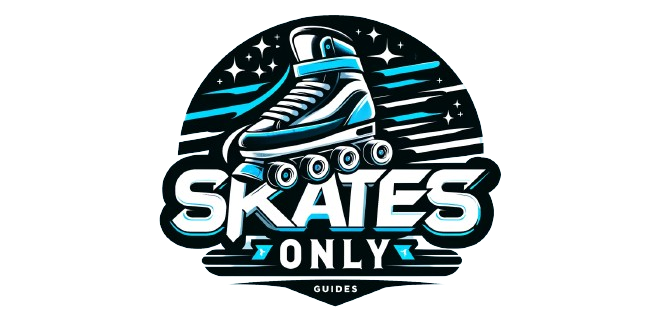In the complex world of professional hockey, the term “AAV” often pops up, especially during discussions around player contracts and team budgets.
AAV, or Average Annual Value, plays a critical role in shaping team strategies and managing finances under the tightly regulated salary cap of the NHL.
This article delves into what does AAV mean in hockey, why it is important, and how it influences the broader dynamics of the sport.

What Does AAV Mean In Hockey?
AAV stands for Average Annual Value, which represents the yearly cap hit of a player’s contract, calculated by dividing the total contract amount by the number of years in the term of the contract.
This figure is crucial because it determines how much of the team’s salary cap space each player occupies.
Since the NHL imposes a salary cap to ensure competitive balance among teams, managing AAV effectively is essential for team management to assemble a competitive roster without breaching financial regulations.
AAV in Player Contracts

When a player signs a multi-year contract, the AAV is a straightforward calculation of the total value of the contract divided by its length.
For instance, if a player signs a contract worth $30 million over 5 years, the AAV would be $6 million.
This means that each year, $6 million counts against the team’s salary cap, regardless of the actual salary paid in any given season, which might fluctuate due to front-loading or back-loading of the actual payments.
This method helps teams plan their financial strategies and player utilizations more predictably.
AAV vs Salary Cap
The relationship between AAV and the salary cap is a dynamic aspect of team management in the NHL.
The salary cap is the maximum amount a team can spend on player salaries, and it is set by the league.
The cap changes yearly, influenced by league revenues and other economic factors. Teams need to maintain the total AAV of all contracts under this cap limit.
Effective management of AAV is crucial, as penalties for exceeding the cap can include fines or forfeiting draft picks, severely impacting a team’s future prospects.
Impact of AAV on Team Dynamics

AAV significantly impacts how teams are built and maintained. Management must balance high-value contracts with lower-value contracts to assemble a complete roster while staying under the salary cap.
Teams often face tough choices, especially when star players demand high AAV contracts that can limit financial flexibility.
Teams with effective AAV management can maintain competitive rosters and have the ability to adjust their lineup when opportunities or challenges arise.
Future Trends
The landscape of AAV management is likely to evolve with changes in the salary cap, which could be influenced by new TV deals, changes in league revenue, or collective bargaining agreements.
As revenues potentially increase, the cap may rise, giving teams more leeway in managing their finances. Consequently, AAVs could also see an upward trend, changing how contracts are negotiated and structured.
Historical Perspective on AAV
Today’s NHL salary cap and AAV reflect an evolving landscape of financial management, heavily influenced by the 2004-2005 lockout.
The subsequent introduction of the salary cap fundamentally shifted the league’s economic model, ensuring competitive balance by tying team spending to league revenues.
As the cap ceiling rose, so did player salaries, with AAV becoming a pivotal factor in long-term team planning. Each new contract set a market benchmark, as seen with Sidney Crosby’s 12-year extension in 2012, which set a precedent for star valuations.
Conversely, the trend of front-loading contracts led to the NHL instating cap recapture penalties to discourage manipulation.
The balancing act between securing top talent and maintaining cap flexibility continues to define team strategies and, as seen with the Toronto Maple Leafs’ allocation of significant cap space to a core of elite forwards, can provoke extensive debate about the optimal approach to building a championship-caliber roster.
AAV Strategies for Team Success
Successful NHL teams skillfully navigate the salary cap, striking a delicate balance between investing in star talent and ensuring roster depth.
Allocating significant AAV to high-caliber stars, such as Connor McDavid or Sidney Crosby, is essential for drawing fans and winning games, but it necessitates careful spending on supporting players to stay under the cap.
Smart management involves mixing seasoned veterans on cost-effective deals with homegrown talent on entry-level contracts.
Regarding contract length, long-term deals can secure core talent but risk financial immobility, whereas short-term contracts provide flexibility to adjust rosters annually.
However, the latter may lead to higher AAV demands in successive negotiations, challenging cap management. Effective strategies blend both approaches, ensuring both immediate competitiveness and future adaptability.
Pro Tips
For team management, understanding the intricacies of AAV in contracts is vital. Considering potential performance bonuses, which can also count against the cap, is important when calculating actual financial implications.
Fans who grasp these concepts can gain deeper insights into their favorite team’s strategic decisions, improving their overall engagement and discussions around the sport.
You may also find useful: What does Fow Mean in Hockey Stats? | What Does SOG Mean in Hockey?
Frequently Asked Questions (FAQs)
What happens if a player’s performance does not live up to their AAV?
While a player’s performance not meeting expectations can be disappointing, the AAV remains unchanged as it is contractually agreed upon. This situation can strain the team’s financial flexibility and roster management.
Can AAV decrease over the life of a contract?
No, the AAV of a contract is fixed once it is signed and does not change throughout its duration, regardless of the actual yearly payments to the player.
How do entry-level contracts impact a team’s AAV?
Entry-level contracts are usually at a lower AAV, providing teams the ability to manage salary cap space more effectively while integrating young talent into their rosters.
What role does the NHL Players’ Association play in AAV negotiations?
The NHL Players’ Association ensures that players receive fair contracts and that their rights are protected during negotiations, influencing overall contract structures and AAV figures.
How does AAV affect trades between teams?
AAV is a significant consideration in trades as teams must ensure that incoming and outgoing contracts allow them to remain under the salary cap.
Conclusion
Understanding AAV is pivotal for anyone closely following NHL hockey, as it provides insights into the financial and strategic frameworks that shape team compositions and competitive balance.
Whether you are a casual fan or a seasoned analyst, grasping the nuances of AAV can enrich your appreciation of the sport’s off-ice complexities.

Matthew James is a passionate skater who wanted to create a platform to share his love for skating with others. With a vision to create a vibrant community of skaters, he aims to provide a space where skaters of all levels can connect, learn, and grow together.
